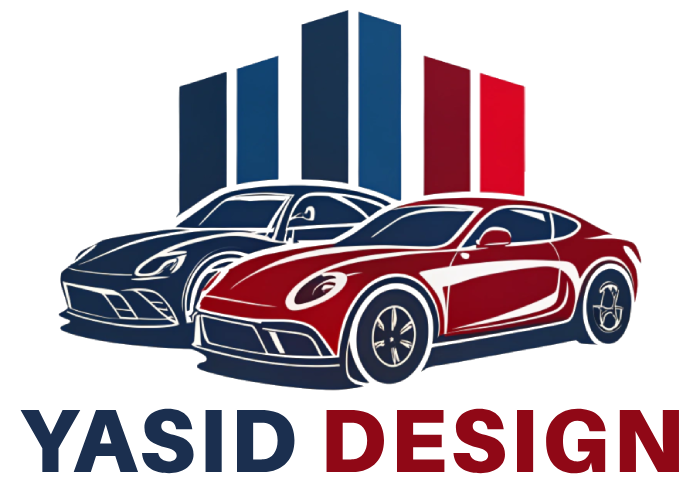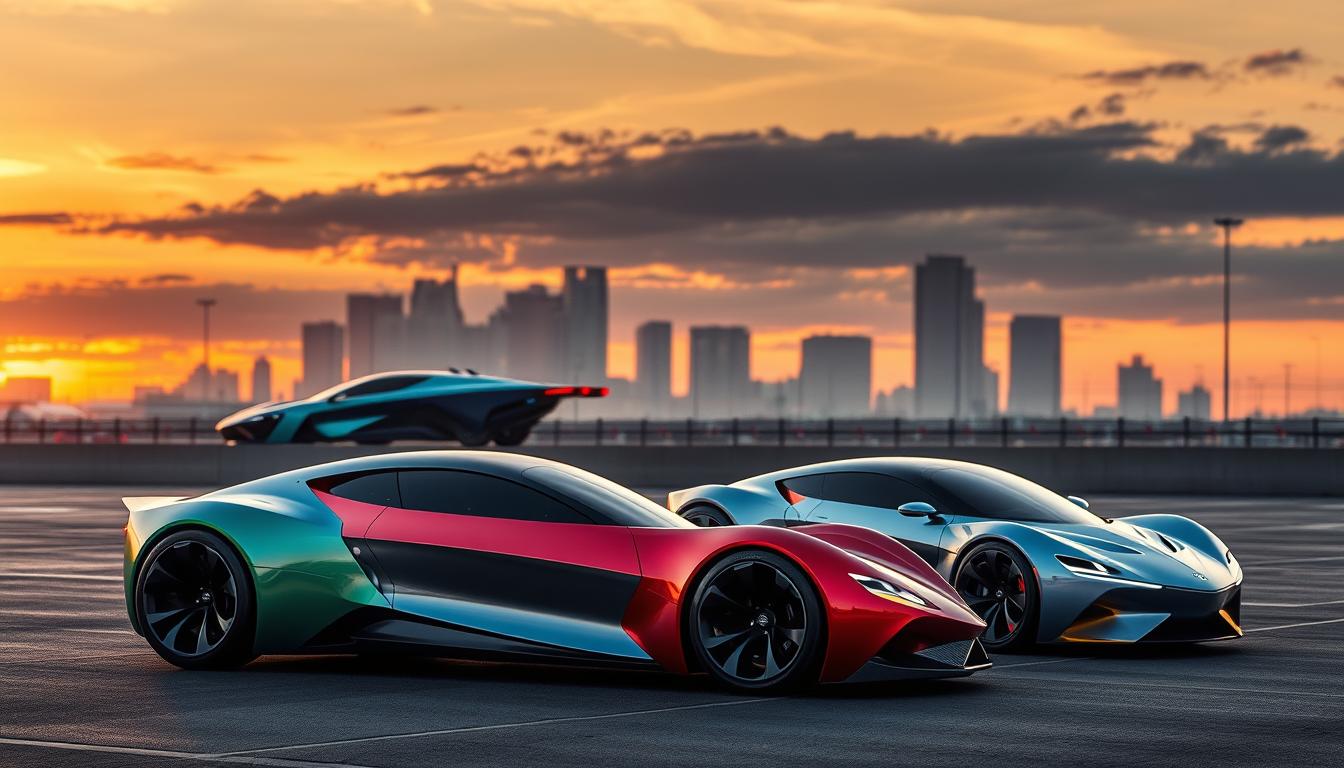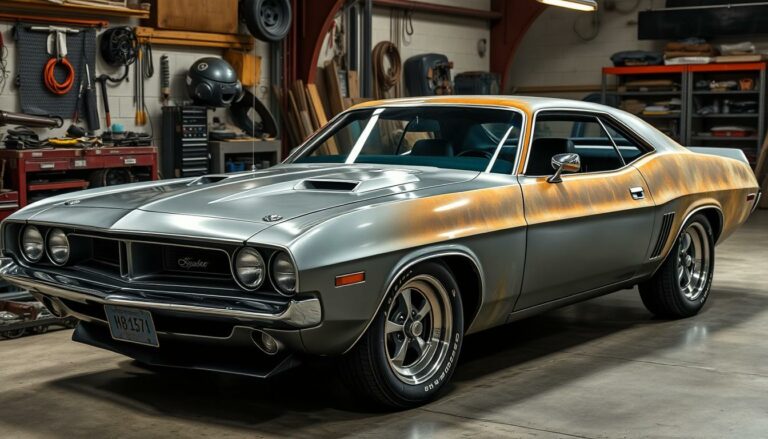Automotive design is a captivating journey that marries imagination with technical prowess, shaping the concept vehicles that will drive the future. This innovative field emphasizes the importance of creative automotive engineering, where aesthetics meet functionality. Leaders in the industry, such as Tesla, BMW, and Toyota, exemplify how the design process can yield groundbreaking vehicle innovation through thoughtful design that considers sustainability and user experience.
In addition to technical skills, understanding consumer needs and market trends plays a crucial role in developing top-tier vehicles. As we dive deeper into the art of automotive concept design, we will explore how this vibrant discipline evolves to meet the demands of an ever-changing automotive landscape.
Understanding the Foundations of Automotive Concept Design
Automotive concept design relies on several foundational principles that guide the creative process. These principles include sketching in design, ergonomics, and the psychological impact of color and material choice. Each element plays a crucial role in shaping not only the aesthetics of a vehicle but also its functionality and user experience.
The Role of Sketching and Visualization
Sketching in design serves as the initial step in turning abstract ideas into visual communication. Designers leverage automotive ideation techniques to create rough sketches that capture the essence of their concepts. This process fosters creativity, allowing for quick exploration of various forms and styles. As ideas develop, concept visualization becomes integral, particularly with the aid of CAD software that facilitates detailed rendering. The ability to visualize designs enhances collaboration among team members and aids in effective decision-making.
Importance of Ergonomics in Design
Integrating ergonomic design principles is vital for ensuring comfort in automotive design. It focuses on optimizing human factors in vehicles, enhancing the overall driver and passenger experience. Features such as user-centered design, control placement, and seating arrangements are refined to create intuitive interactions. Brands like Volvo and Mercedes-Benz exemplify the commitment to ergonomics, emphasizing designs that cater to diverse users, including those with specific needs. This approach not only addresses functionality but also expands market reach through inclusivity.
Color Theory and Material Selection
Color psychology in automotive design significantly influences consumer perception and brand identity. Designers strategically select colors to convey emotions, such as red for excitement and blue for reliability. Material selection in design directly impacts both aesthetics and practicality. Recent trends in car finishes, like matte and metallics, reflect evolving consumer desires. Notably, brands like BMW have innovatively incorporated sustainable practices, using recycled materials in their models. This focus on branding through colors and materials enhances marketability while promoting environmental stewardship.
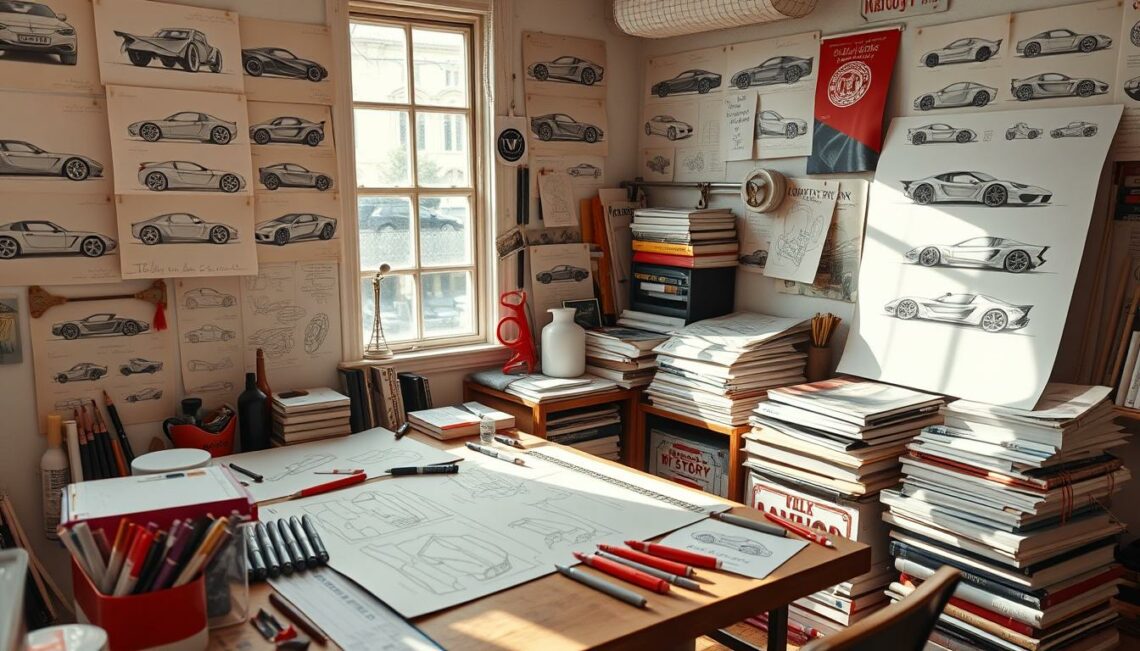
The Art of Automotive Concept Design
The automotive design process is a comprehensive journey that transforms initial concepts into fully functional vehicles. This process is structured yet adaptable, allowing designers and engineers to refine ideas through rigorous testing and collaboration. Understanding the various stages of this process ensures effective execution from concept to production.
Stages of the Design Process
The design process in automotive involves several critical stages:
- Defining the Concept: Establishing the vision and goals for the vehicle.
- Sketches and Ideation: Developing initial sketches that explore various aesthetics and functions.
- Initial Design Phase: Creating detailed designs that incorporate engineering principles.
- Prototyping Stages: Building physical prototypes to evaluate design aspects and functionality through iterative design.
- Testing and Feedback: Gathering insights from testing which leads to refinements.
- Final Production Plans: Preparing for mass production based on validated prototypes.
Each of these stages requires careful consideration, as iterations play a crucial role in ensuring quality and alignment with consumer expectations. Companies like Ford and Honda exemplify how iterative design contributes to successful outcomes in automotive design.
Collaboration Between Designers and Engineers
Effective collaboration is vital in the automotive design collaboration process. Designers and engineers must work together to amalgamate creative ideas with technical viability. This designers and engineers synergy enhances product development teamwork, maximizing the strengths of both disciplines. Key aspects of this collaboration include:
- Interdisciplinary Teamwork: Encouraging varied teams to share expertise and insights.
- Clear Communication Channels: Ensuring all team members understand project requirements and constraints.
- Iterative Feedback Loops: Facilitating continuous improvement through regular assessments during development.
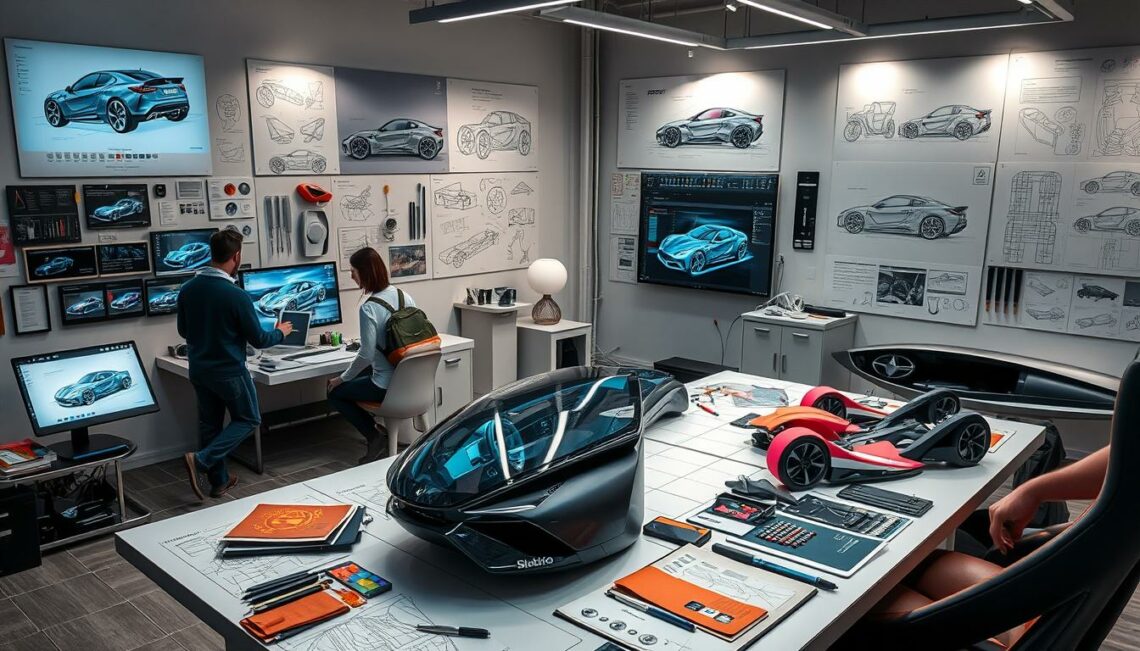
Companies such as Tesla have effectively harnessed this synergy, creating designs that are not only innovative but also practical for mass production. By capitalizing on the strengths of interdisciplinary teamwork, they ensure that the final products meet both aesthetic and regulatory standards.
| Stage | Description | Key Focus |
|---|---|---|
| Defining the Concept | Establishing project goals and vision. | Vision clarity |
| Sketches and Ideation | Exploring design options through sketches. | Creativity |
| Prototyping Stages | Building models for testing and evaluation. | Functionality |
| Iterative Design | Refining design based on feedback. | Quality enhancement |
| Final Production Plans | Preparing for manufacturing based on prototypes. | Production readiness |
Innovative Trends Shaping Future Automotive Concepts
The automotive industry is in a state of transformative evolution, driven by innovative trends that are redefining vehicle design. One of the most significant movements is in electric vehicle design, where brands are embracing eco-friendly materials and energy-efficient systems that resonate with the growing awareness of sustainability in automotive design. Companies are not only focusing on performance but also on how they can lessen their ecological footprint.
At the same time, the rise of autonomous vehicle concepts presents intriguing challenges for designers. Incorporating advanced technology requires a fresh approach to user interfaces and human-vehicle interaction. Safety remains paramount, as designers strive to create intuitive systems that enhance the driving experience while ensuring the utmost security. Automotive leaders like Rivian and Nikola are leading the charge, skillfully intertwining cutting-edge technology with sustainable practices.
As we look to the future, it’s clear that these innovative trends are set to shape the next generation of automotive concepts. With a firm commitment to sustainability, adaptability, and advanced technology, the road ahead is not only promising but essential for crafting a more eco-conscious and user-centric automotive landscape.
